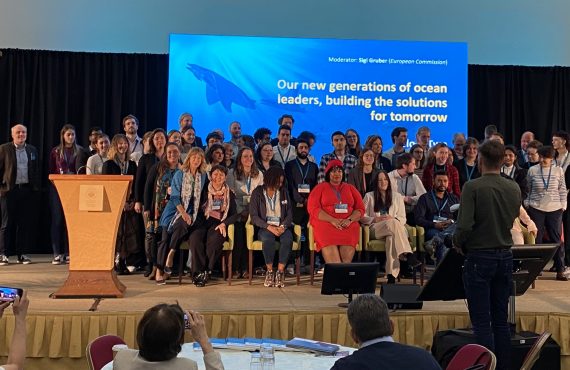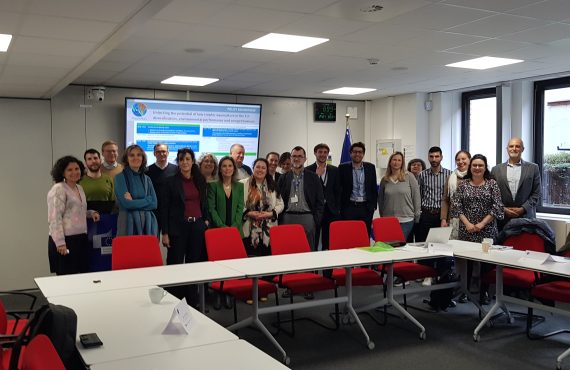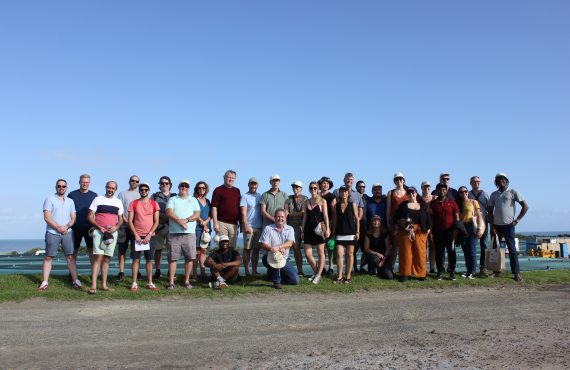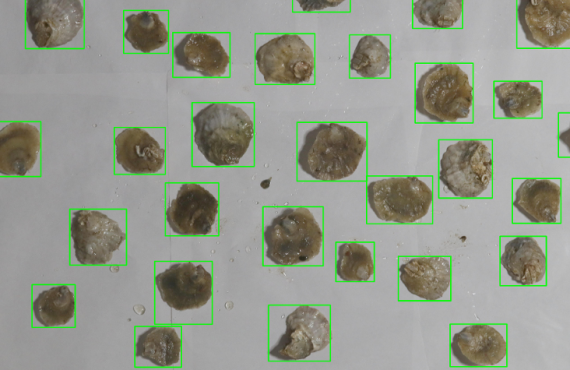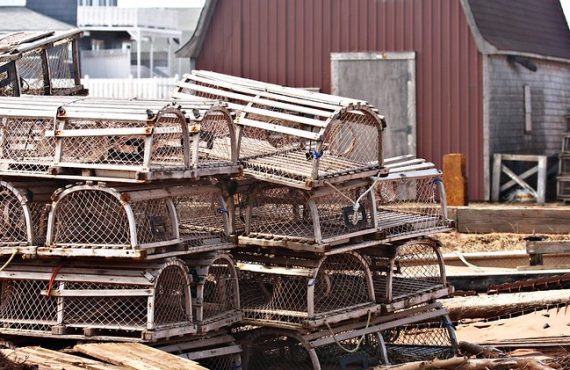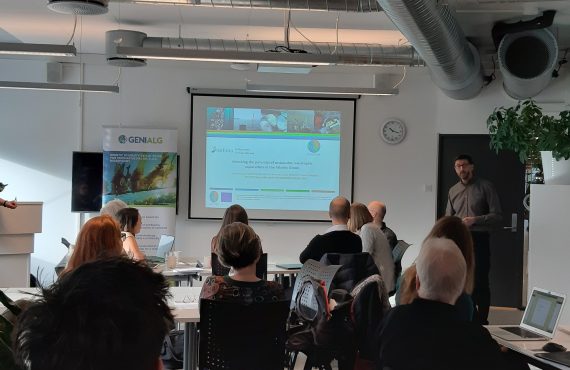A figure showing the seaweed role in IMTA systems. Slide by Stefany Almeida Pereira, of UNESP.
By Stefany Almeida Pereira, marine biologist at Universidade Estadual Paulista (Unesp).
Designing a Ph.D. project is a challenge, especially when you aim to make a difference in society. I started my academic Ph.D. in innovation by studying sustainable aquaculture systems in the Aquaculture program at São Paulo State University (UNESP – Brazil). I participated with my supervisors in Aquavitae´s Case Study 5- Biofloc and pond-based IMTA, and my goal is to develop a sustainable integrated multitrophic aquaculture system for commercial shrimp farms.
How to make difference?
In the Brazilian Northwest, the shrimp farm is a very traditional activity and has economic importance for society. However, shrimp monoculture has suffered from disease incidences, like the white spot syndrome (WSS), that results in loss of farm productivity. Solutions may be found in management, for example, reducing the amount of shrimp by area. However, it also affects productivity.
Our case study, conducted at Primar Aquacultura farm, is related to the organic shrimp farming system, which is more environmentally friendly than traditional ones, as it does not use chemical products like pesticides, antibiotics, and formulated feed. As it is non-fed aquaculture, it operates at low shrimps stocking densities and still suffers from diseases. So, the combination of disease outbreaks and low stocking densities resulted in low productivity on the farm.
IMTA as a solution
The integrated multitrophic aquaculture (IMTA) is the culture of a fed species with an organic extractive species to absorb the small particulate organic matter and an inorganic extractive organism to the consumption of the dissolved inorganic nutrients. The IMTA mimics the natural ecological processes, so it reduces environmental impacts and improves farming conditions. Our project aims to solve the shrimp production problems by providing a sustainable design integrated pilot culture of shrimps, oysters, and seaweeds in the same production unit (earthen ponds).
What is the seaweed’s role in pond IMTA systems?
Seaweeds are autotrophic organisms that can act as a biofilter to the system, as they absorb inorganic nutrients like nitrogen and phosphate and thus improving water quality. Some studies show that macroalgae present components capable of increasing shrimp’s immunity, which is highly interesting to commercial farms. Another advantage of introducing seaweeds in integrated farms is that seaweeds are habitat to associate organisms as amphipods, which are a high-quality feed to the shrimps. It is relevant, especially for organic farms that do not use commercial feeding.
Our pond based IMTA system
In this system, the oysters are biofilters of organic particulate materials in water and produce pseudo feces that can be eaten by shrimps. Seaweeds are filters for inorganic dissolved nutrients and substrates for small organisms that are feed for shrimps. By enhancing the shrimp diet and improving water quality, shrimp productivity will increase and also farm sustainability, due to the higher number of products generated and market diversity, and better efficiency in the use of resources.
The previously obtained results
The marine seaweed species of more economic interest seems not to be adaptable to (estuary) earthen ponds environment. A lot of particulate material accumulates in seaweeds that do not grow and suffer from loss of biomass.
Another green filamentous macroalgae that grow naturally in ponds was noted and has shown potential for farming. We tested different materials to capture these seaweed seeds to culture on a large scale. This species has the potential to grow in shrimp ponds. However, it is necessary to find a better structure to culture this seaweed to obtains high productivity, economic feasibility, and easy management.
The Covid-19 pandemics made it hard to keep the project evolution. For a period, we had to slow down the field works, which caused a delay in the experiments. The pilot-scale IMTA tests started in September 2020. However, there are still milestones to run to obtain a better development of the integrated system model.
The perspectives make the difference
The pond based IMTA system can bring light for traditional shrimp farms concerning productivity and disease problems. The pilot-scale IMTA cultivation that we are designing may be an alternative and improvement for the production of the Primar Aquacultura farm and a system model that can be adopted and adapted for other farms with similar conditions.
Full recording of the webinar “Seaweeds as key components in pond IMTA systems” (26 Nov 20).








